Memory has been spatial ever since the oratorical practices in Antiquity. When memorising speeches, one had to imagine a building with various rooms in order to distribute the things to remember throughout the building. Subsequently, one could recall the entire speech by walking from room to room in one’s thoughts.
Something similar happens in the Icelandic writer, Kristín Marja Baldursdóttir’s (b. 1949), Karlsvagninn (2009; The Big Dipper). A teenage girl and an elderly woman have ended up in a summer cottage outside Reykjavik. To pass the time, the older woman talks about her childhood, her family without its father but with a mother, a paternal grandmother, a paternal aunt, and some sisters. The route into this female world of yes-teryear is navigated via the recollection of the rooms in the apartment in Reykjavik, at night when everyone is asleep. The woman’s technique resembles that of the ancient rhetoricians – but not quite. The rooms are not just spaces with objects that trigger memories. The woman gradually approaches an understanding of her childhood self via the ambience of the time. Memory, and with it the woman’s understanding of who she is today, emerges from the surroundings. When her words recall the rooms as simultaneously concrete, corporeal, and emotional, then she encounters herself as a child. These indoor spaces – the apartment in the city and the summer cottage in the countryside – are surrounded by Icelandic nature. This nature cannot be reduced to a human yardstick, and perhaps that is why it may have a liberating effect.
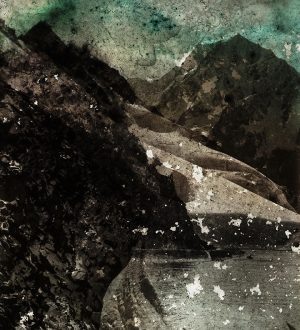
Finnish-Swedish Johanna Boholm’s (b. 1976) debut novel, Bygdebok (2013), is also an exchange between two women, sisters who want to write a bygdebok, a catalogue of the places of their childhood, but they find access to memories difficult. The faded old pho-tographs from the 1970s are just faded old photographs. The sisters’ project is in danger of ending up as pictures of their troublesome relationship here and now while things around them mount up without surrendering their secrets:
”Fotografera själv”, säger du sakta. ”Fotografera det här: lägenheten, parkerings-platsen, dig och mig. Isen. Ån, kvällarna, bilarna, alt som finns runt oss. Fotogra-fera mödrar mostrar som smyger upp i trapphus slaskvåta höstkvällar, utan or-dentliga skor, snikna, missförstådda. Skriv din berättelse om blåsiga nätter i en stad vid ån. Ingen granskog. Hur skriver du utan granar?”
“Take some photographs yourself,” you say gently. “Photograph what’s here: the apartment, the carpark, you, and me. The ice. The stream, the evenings, the cars, everything around us. Photograph mothers and maternal aunts, who steal up the stairwell slushy-wet autumn evenings, in unsuitable shoes, greedy, misunder-stood. Write your account of windy nights in a town by the river. No spruce for-est. How do you write without spruces?”
“Photograph what is around us”, one sister says to the other. They will find themselves in their surroundings. That is why they write a bygdebok and not an autobiography. Sur-roundings might well seem alien and refuse to surrender their secrets but, nonetheless, the sisters are entangled in their surroundings and the surroundings are entangled in the past. Mothers and aunts steal into them and it turns out that the sisters cannot write without spruce trees. The spruce forest is the place of silence, the place where childhood ski tracks and trails of memory vanish, and it is their father’s place, the father they are constantly searching for – but he is not to be pinned down. Close up, the sisters are surrounded by things, mothers, and aunts moving half-hidden in the damp darkness of the village and everyday life. Further away, they are surrounded by the paternal forests. The women’s domain is intimate and semi-confidential. The father’s domain is the misty realms of memory, the magnetic counter-pole of the narrative.
Boholm’s bygdebok is, like most of the cases analysed here, a family story. In Norwegian Benedicte Meyer Kroneberg’s (b. 1972) debut novel, Ingen skal høre hvor stille det er (2010; So No One Can Hear the Silence), the adult daughter’s grieving after her mother’s possible suicide is depicted with the aid of spatial metaphors. The daughter is an architect, specialising in large building complexes due to her distaste for homes and their small spaces. Liberation from small spaces can, in itself, be a form of women’s emancipation – e.g. when Henrik Ibsen’s Nora leaves, slamming the door behind her – but for Kroneberg’s narrator, the liberation is primarily from the woman who reigned over these spaces: the deceased mother from whom the daughter has inherited her torn mind. As the book opens, the daughter sits paralysed in one of these small spaces: her car, parked outside the home in the darkness, the windows covered in snow. Halfway through the book, her father patiently and methodically clears the snow from the yard, and at the end, after she has been to see the scene of her mother’s accident and literally thrown up her inner darkness, the book concludes with a clear and frosty view of the snow on the fields.
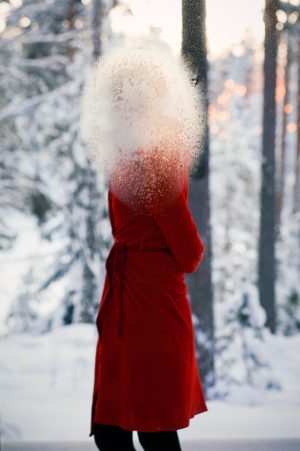
The outline of the theme should be clear by now: the human being surrounded. The woman whose understanding of herself and the world starts from being surrounded, being part of an atmosphere, of a complex, affective, and changeable mood that seems to exist prior to contrasts between subject and object, fact and feeling, childhood and present. Put like that, it might be tempting to call this a female space. However, if so, it is embedded in a historical space. In an age of globalisation, climate change, social media, and wireless technology, it is not surprising that identity and existence are perceived as something occurring in exchange with the surrounding world, exchanges that are affective and atmospheric, preceding stable subject and object positions. We are all surrounded on a hitherto unprecedented scale. However, we have already seen books working with gendered space: the purposive object space versus the atmospheric space, intimate space for female power struggles versus unbound nature, and, in the case of Benedicte Meyer Kroneberg, even a contrast between women, who are split between the snowed-under space and the wide white expanses, and the father keeping the snow from the door and the days moving along. Snow, silence, darkness, and the contrast between the cramped home and immense nature are strikingly common features and pro-totypically Nordic. Are the spaces of memory and women’s spaces I have touched upon, and the three examples I shall now look at in a little more detail, fundamentally Nordic spaces?
The Silence of Snowdrifts
The link between snow and concealment in Ingen skal høre hvor stille det er also features in Norwegian writer Merethe Lindstrøm’s (1962) Dager i stillhetens historie (2011; Days in the History of Silence, 2011). Towards the end of the novel, the narrator finds her husband, who is possibly living with dementia, waiting at a busstop in the snow:
“In front of us on the asphalt, the snow from the snowdrifts along the road is whipped up by the wind, forming waves that are wiped away and then reshaped, downward and downward, fresh waves all the time, the movement seems so gentle, accidental, but nevertheless creating the same pattern all the time, and I look at him, and I feel a powerful desire for him to look back at me, but he stares straight ahead, captivated by the movement, what the wind is doing with the snow […]” (2011; Days in the History of Silence (English transl. by Anne Bruce).
Her husband has retreated into two worlds: the white world of silence and a world of childhood memories. He, Simon, is a German Jew; as a boy, he witnessed the arrest of his family. The family had lived in the confines of an apartment where it was imperative to be quiet as a mouse to avoid detection. Everything was done by silent communication, gesticulation, and facial expression. They were just as imprisoned by the silence as the claustrophobically small spaces. Simon had made a temporary escape to the loft; looking down at the street, the people “resembled waves surging in a peaceful, leisurely rhythm over the paving stones”. When the police arrived and crossed the road, it was as if “one of the waves he had seen earlier was now changing direction and coming toward him. And before the fear, before the dread, he said that he felt eagerness, almost happiness, at the prospect of becoming part of the world down there once again.” Simon has shared this episode, his past and his guilt, with his wife but not with his daughters; now an old man, he is being consumed by it, or rather by what cannot be communicated. He has withdrawn from the world, and the wave that had moved towards him, the wave of life and death, has pulled back. He simply stares paralysed into the waves of snow and perhaps into his own horror.
That is one of the deliberate silences in the book. The other is the narrator’s secret. She is called Eva and she has a son who was given up for adoption. This, too, has been kept from the daughters and the outside world. Over the years, Simon has struggled in vain to reveal both secrets whereas Eva seems indifferent. He wants it out in the open, she leaves it well alone until, as the novel progresses, they change positions and he falls silent while she tries to articulate the unsaid in her narrative. In his childhood memory, silence is spatial. It encloses life. In the novel, silence is also linked to another spatial element: trespass. It encircles two intruders: a young and somewhat menacing man who had appeared in the living room one day and then was gone again (perhaps he was trying to abduct the youngest daughter, perhaps he was Eva’s son), and a Latvian woman, Marija, who was once the couple’s housekeeper and confidante. They dismiss her when she expresses anti-Semitic views. Her departure creates a gulf between them, because she inadvertently speaks into the silence. Words, it seems, may destroy just as much as silence, and, compared to silence, words often seem crude and stupid.
Lindstrøm’s novel not only examines the psychology of suppression, for silence is also a way of existing. It involves a heightened attention to the world. The waves of the snow are also the frequencies of silence. Simon and Eva are not alone on that bench. The narrator and the reader also stare into or listen to the silence that is the silence of the novel. However, no silences are completely silent. Just as there is always sound in silence, the expansive whiteness contains waves of snow, patterns, and pulsations that may be registered, observed, and vanished into. In her exploration of silence, Lindstrøm makes use of the paradoxical relationship between writing and silence. On the one hand, the narrator verbalises the silence in which she lives, she attempts to understand the consequences of keeping silent and measures the tremors left by intrusion into the far-too-edgy space of silence. On the other hand, writing is always a silent approach and as such, a continuation of the lived silence. The novel goes beyond itself at the point where its articulation is drowned by silence, passing into pulsations, vibrations in nothingness, drifts of snow whipped hither and thither by the wind.
The Proliferation of Things
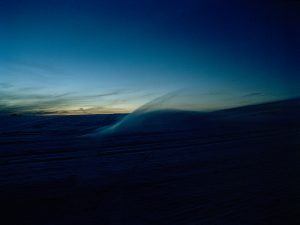
Moving from Lindstrøm’s novel to Finnish writer Rosa Liksom’s (b. 1958) Hytti nro 6 (2011; Compartment No. 6, 2014), the Nordic silence comes with us, but in a relativised version. The Latvian housekeeper has become – in this story – a domineering Russian male. Unlike Lindstrøm, the narrator’s temperament is profoundly different to that of the protagonist, a silent young Finnish woman who shares a train compartment with the aforementioned Soviet citizen, and the entropy of silence – its tendency to accumulate in drifts of amassed time – is replaced by the Trans-Siberian Railway’s wearisome but imperative onward progress from Moscow to Mongolia. The young woman thinks and sketches, the man talks and drinks. His Russian sentiment, physicality, and home-distilled poetic philosophy bounce off the young woman’s adamant silence but because her father had been cast in the same mould as this man, she, nonetheless, takes some comfort in his company.
All this takes place in the narrow, intimate, and catastrophic space of the train compart-ment. Outside the compartment lies the Soviet Union’s immense, corroded historical spaces in the years leading up to the fall of the Berlin Wall and midway between them, like a dividing sheet of paper, a thin membrane of fiction, the landscapes seen passing by outside the train window. It is John Ford’s film, Stagecoach, converted into a novel, a chamber piece with historical resonance and a bucketful of action towards the end. Like Ford’s Westerns, the mood of the novel is shaped by the contrast between the far-too-small space and the as-good-as-endless space outside supplemented by the young wom-an’s flashbacks to the difficult relationships she has left behind in Moscow. This deep space, which is also the space of restlessness, of searching, is contrasted by the flat, fleeting landscapes rushing past the window of the train, a flatness that is reinforced by the style of the novel and its more or less episodic composition. The form of the novel mimes the monotony of the Trans-Siberian train journey to the extent that it becomes stylised. In the Danish and Swedish translations, this is found in the repeated subject-verb-object sentence structure, in the travellers’ routines, in the repetitive turn of the phrase every time the train pulls out of the station, a turn of the phrase, which frequently turns into lists, the accumulation of things, and in the repeated fixtures of the landscape as pictured on the covers of the Swedish and Danish editions: train window in the foreground, a middle distance with buildings or trees, and a horizon, above which a bird is forever hovering. The rhythm of the train and the stations is transferred to the intervals in which the departures and landscape descriptions are inserted.
Towards the end of the novel, the young woman starts to speak. While she may be said to travel towards language by so doing, at the climax of the novel she is surprisingly voiceless. Her destination turns out to be some rock carvings in the Altai Mountains. When she reaches them, she sees the carvings in the dark, lit up in glimpses by the headlights of passing lorries. She thus has to feel her way to the rock carvings, reading the rocks with her hands while weeping soundlessly with joy. The young woman’s silence meets the silence of things. She is on a Grand Tour but the wordless, tactile encounter with things reinterprets her formative experiences. This is not the human being’s inner journey to self-perception but an encounter with a world where humankind is on an equal footing with things. The novel evokes the overwhelming aspect of the Soviet experience through accumulations of things and sensory descriptions. This shabby, dirty disorder is degrading and inhuman. It places the individual among a myriad of things, the number of which seems infinite because nobody controls them any longer. That is what the lists give away. Putting things on lists liberates them from their purpose and they become surroundings in their own right. The characters in the novel are no longer subjects among objects, they are thrust right into the middle of an ongoing and almost animist surrounding world of objects:
’’… der var en klæbrig lugt af søvn i kupéen, vinduet åndede ikke, teglassene stod tavse på bordet, krummerne lå stiltiende på gulvet. En ny dag lå foran dem, gule rimfrostdækkede lunde af birketræer og fyrretræer, i skjul bag hvilke dyrene bevægede sig rundt, ny sne bølgede hen over de åbne vidder. Flagrende hvide underbukser, slappe penisser, fisser, misser, muffedisser, store blomsterbroderede flannelsnatskjorter, uldsokker og sjaler, tandbørster med stive børster, natten suser gennem mørket og det dages …’’ (Kupé nr. 6)
“…the sticky smell of sleep in the compartment, no breath from the window, tea glasses quietly on the table, crumbs silent on the floor. A new day. Yellow, frosty birches, pine groves, animals busy in their branches, a fresh snow billowing over the plains. Flapping white long johns, limp penises, mitts and muffs and cuffs, and flowered flannel nightgowns, shawls and wool socks, and straggly toothbrushes. The night speeds through the dark into dim morning…”
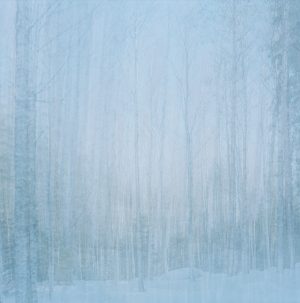
The language the woman finds and makes her own is perhaps the language of things. Bruno Latour has pointed out that thing also means assembly and at things/assemblies people speak all at once. The Russian man’s language is the subject’s language, a very human one dishing out judgements right and left, pursuing its owner’s interests, and exerting force. This is the language, which has filled the compartment throughout the long journey. On the far side of the man’s discourse, the woman finds a language in which the right to speak is distributed even-handedly between everything in her surroundings. (Bruno Latour: Ting. Hvorfor er dampen gået af kritikken? Fra kendsgerninger til anliggender. Kunstakademiets Arkitektskole, 2007)
Garden Poetics
Surrounded by silence in the form of snow or by assemblies of things – in both cases, attention is directed at the world as the surrounding world. And, in both cases, silence and things constitute a form of protection from this surrounding world and an opening towards it. The bubble is a classic image of compromise between the sheltered and the exposed. A perfect closed, but transparent, space, the soap bubble floating off into the world until it bursts. The most recent of Danish writer Christina Hesselholdt’s (b. 1962) four books about Camilla and her group of close friends, Agterudsejlet (2014; Marooned), opens with burst bubbles – her mother’s death, divorce from Charles, and the break-up of the friendship group – and it ends with the ultimate bubble of life: Camilla’s pregnant bump. To avoid floating off in a metaphor that the book does not itself employ, we must start in a different and more down-to-earth place, one that recurs in the four books and is the opening setting in Agterudsejlet: the garden.
The garden is an important place to Camilla, her mother, and her maternal grandfather, but it is also associated with the writing process. In the second book of the series, Camilla – og resten af selskabet (2010; Camilla and the Rest of the Party), Camilla and her childhood friend, a writer named Alma, visit the homes and gardens of Virginia Woolf and Silvia Plath. In the middle of describing Woolf’s garden, Alma quotes a passage from Woolf’s diaries about the need for prose to be saturated moments of poetry rather than crammed with the details of realist literature. In the third book, Selskabet gør op (2012; The Party Breaks Up), Alma talks about “delivering straight from the sentences” rather than laboriously constructing plot and characters. The sentence rather than the plot drives the books forward. The connection between writing and gardens carries on in Agterudsejlet when, for example, Camilla appropriates the garden, and thereby her new life, by sitting in it to write. The garden is ‘Dichtung’, in the sense of densification, the saturated moment of which Woolf wrote and which Hesselholdt’s sentences expertly fulfil, but it is also ‘Lichtung’, a clearing. At the beginning of the book, Polish gardeners are clearing away, making for more light and air, an operation that is not without similarities to the book’s loose, almost note-like composition in which the six people in the party speak, as in Woolf’s The Waves, by turns.
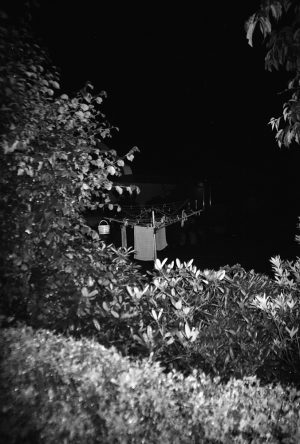
The garden becomes an image of being surrounded and of having to find your home. The ‘representation of Home’ goes everywhere with you, you have to cultivate your garden, without becoming trapped in it. Two passages, which – typical of the books, are comments on literary models – illustrate the dilemma between security and freedom, between densification and clearing. The first concerns Austrian writer Thomas Bernhard’s memoirs and his story about the shoe closet, in which he was allowed to practise his violin. Like Joshua, he played until the walls came tumbling down carrying thoughts of suicide. Camilla: “the style (of playing) being the release of your self – I take up space so the room has to give in. I play it ragged, I play it into fragments, and myself too. And then I survive”. The parallel to Camilla, in the garden writing herself out of her low point, is obvious, without reducing the two events into one another. In the course of the novel, “marooned” Camilla bursts the garden’s overly cramped space, not least by writing. In the words of another member of the party, Alwilda, this open writing room – now with house and not garden as spatial metaphor – is compared thus:
’’I [Iris Murdochs] Et afhugget hoved (som Camilla har lånt mig) lever personer-ne med ulåste hoveddøre, eller de har alle sammen nøgler til hinandens huse, og derfor løber de bestandigt ind og ud af hinandens huse, og de løber ind i hinanden i hinandens huse. Og denne pivåbenhed er selve stemningen i romanen.’’ (Agterudsejlet)
“In [Iris Murdoch’s] A Severed Head (which Camilla has lent me) the characters live with unlocked front doors, or they’ve all got keys to one another’s houses, and so they’re forever running in and out of one another’s houses, and they run into one another in one another’s houses. And this wide-openness constitutes the very tone of the novel.”
This is exactly what the characters, as well as the motifs and incidents, do in Hesselholdt’s books. It cannot, however, be said of the books, that “this wide-openness con-stitutes the very tone” in them. The bubbles are too dominant for that, both the bubbles be-tween the characters two and two, and the overall bubble formed by the party. As readers, we would quickly start feeling just as locked in as Thomas Bernhard, were it not that these bubbles burst, fragile as they are, and were it not for the books’ open form. The cover of each book shows a place of transit – a television tower, a bridge, a flight of stairs, a train station – which, together with the turnover of voices, counterbalances the densification and thereby balances life and writing alike between the need to locate one-self and the necessity of being free.
Lyrical Reflections
Let us look at two types of surroundings from Hesselholdt’s lyrical prose in the context of lyric poetry: voices and sentences. There can hardly be a more atmospheric medium than radio and few art forms invoke nostalgia quite like radio drama. Indeed, voices from the past populate Danish writer Pia Juul’s (b. 1962) collection of poems, Radioteateret. Vi sender: Koblenz (2010; Radio Drama. On Air: Koblenz). The voices of radio drama have risen into the ether across great swathes of time and space, and on an old short-, medium- or long-wave radio they are often denatured, tuning in and out of the signal. The first sound heard in the book is therefore “a faint rustling” from the paternal grandmother’s plastic scarf and “a gurgling noise” that is perhaps, perhaps not, of human origin. The next sounds: scratching, dripping, breathing, whimpering, human or non-human sounds that have yet to become words. That is the frequency of voices and Pia Juul’s poems are always in tune with that frequency. The voice is a number of sounds that have yet to become meaning, or it is meaning on its way to become sound. The radio frequency possesses the graininess or the corporeality of the analogue signal. The same physical resistance occurs in the frequency as the resistance Roland Barthes thought should occur in the voice. In the case of the voice, it is the human body; in the case of frequency, however, it is almost as if we are hearing the atmosphere itself. Before the voices from the past start to speak and fill the spaces with their memories, before they surround the reader with their atmospheres, the first text asks the reader to listen to the physical atmosphere. The atmosphere may be heard, but it does not say anything. It is silent, but there is no silence.
Another way in which poetry, in particular, may render surroundings concrete is by drawing attention to the most fundamental of all literary surroundings: the letters on the white page. In the five movements, which make up Swedish writer Anna Hallberg’s (b. 1975) Colosseum Kolosseum (2010), the mode of the poem varies considerably, as does the degree of syntactic completeness and semantic intelligibility. Hallberg’s words fluctuate between sound and meaning like Juul’s voices emerged and waned in an atmospheric crackling. At points, they are stabilised by being in syntactically and semantically controlled environments, at other points, this order is dissolved in favour of timbric, rhythmic and, not least, graphic environments guaranteeing a musical stability. Not just people, emotions, and bodies, but also words are by definition surrounded. With graphic clarity, Hallberg shows that a poem is not an autonomous entity with clear boundaries via-à-vis the white page, a poem is in constant exchange with the page. It is a poetic ecology. This applies in the first movement’s description of a digestive process, the steak that is consumed and ends as faeces, and it applies in the middle movement, its interweaving of the Colosseum and a Swedish psychiatric hospital. Like the poem, these are both “an environment composed of details”, in which “the demarcation of space holds the world together”, but the madness is also centred in the eye of the arena: “The space ruptures and ruptures and/ is drawn into the Colosseum”. Everything – words included – takes part in a process of dissolution and composition. The poem ends with the wondering thought “If every microsecond could stand still./ Relationship-less”, concluding that the idea is simply yet another way in which to be surrounded: “Slip back into a womb that is empty./ A blister in the universe”.
This examination of what it means to be surrounded could hardly end with a more female space. We are, from the outset and by definition, surrounded. Surrounded by Lindstrøm’s snow and silence, by Liksom’s silent objects, by the garden, the others, and the sentences in Hesselholdt, by atmospheric crackling in Juul, and in Hallberg, the words are surrounded by the unsettled white page. And that is not all. We enter into an exchange with that which surrounds us. If there is anything particularly female about this, it is perhaps that emotions cannot be separated from the space in which they are at work. That is the very definition of atmosphere. Gernot Böhme’s ecstasy of things with its outward effects. Our notion of ‘the Nordic’ is recognisable in the atmospheres formed by silence and speech, light and dark, concealment and madness, closed rooms and wide expanses. The literary surroundings that do not comply with this notion – perhaps coincidentally the Danish – may reasonably be seen as a critique of the notion of a particular Nordic mood. (Gernot Böhme: Atmosphäre. Essays zur neuen Ästhetik. Suhrkamp, 1995)
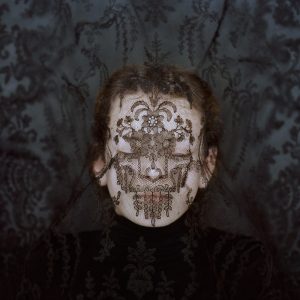
It is tempting to suggest that the theme and the combination of the four contrasts – silence and speech, light and dark, concealment and madness, closed rooms and wide expanses – is prototypically Nordic. Silence, for example. Lindstrøm puts silence at the heart of her book. It follows a logic that Susan Sontag has analysed in her essay, “The Aesthetics of Silence”. Silence is always relative. A book cannot be silent. It consists, after all, of words. Silence is also always dialectical. In Lindstrøm’s case, silence is articulated with the purpose of letting the silence of the book overrun the speech of its narrator. At the same time, the woman’s and the man’s paths cross, given that she goes from silence to speech and he goes from wanting to speak to potential dementia. The dialectics are also at work in Liksom. The silent young Finnish woman finds a language through the Russian man’s speech but it is a language, which overruns itself in the silence of things. Silence is not in itself female but gender is employed in order to evoke the particular silence of each book. Nor is silence in itself Nordic but it assumes its tones from climatic and cultural characteristics and stereotypes such as snow, darkness, and silence.
The female and the Nordic aspect may be considered as discourses, flexible historical agendas worked into the texts. It is not particularly silent in Hesselholdt’s work, her books are far from the Nordic prototype to which Lindstrøm is probably the closest. However, all the books share the sense of being surrounded, they expand and qualify our sense of the ecstatic spaces we inhabit. All the books elaborate on the mission statement penned by Virginia Woolf in 1929, in her small garden studio at Monk’s House in Sussex, i.e. that all women writers must have a room of their own.
Fiction
- Kristín Marja Baldursdóttir: Karlsvagninn. Mál og menning, 2009.
- Johanna Boholm: Bygdebok. Ellips förlag, 2013
- Anna Hallberg: Colosseum, Kolosseum. Albert Bonniers Förlag, 2010
- Christina Hesselholdt: Camilla and the horse. Rosinante, 2008
- Christina Hesselholdt: Camilla – og resten af selskabet. Rosinante, 2010
- Christina Hesselholdt: Selskabet gør op. Rosinante, 2012
- Christina Hesselholdt: Agterudsejlet. Rosinante, 2014
- Pia Juul: Radioteateret. Vi sender: Koblenz. Tiderne Skifter, 2010
- Benedicte Meyer Kroneberg: Ingen skal høre hvor stille det er. Cappelen Damm, 2010
- Rosa Liksom: Hytti nro 6. WSOY, 2011. Compartment No. 6, Serpent’s Tail, 2014
- Merethe Lindstrøm: Dager i stillhetens historie. Aschehoug & Co., 2011. Days in the History of Silence, Other Press, 2011
Non-Fiction
- Gernot Böhme: Atmosphäre. Essays zur neuen Ästhetik. Suhrkamp, 1995
- Bruno Latour: Ting. Hvorfor er dampen gået af kritikken? Fra kendsgerninger til anliggender. Kunstakademiets Arkitektskole, 2007
- Susan Sontag: ”The Aesthetics of Silence” (2006). (10.06.2015)

